Wine & Roses? How about Wine and Yarrow?
On a recent hot summer day, I escorted my daughter and a friend through Napa Valley so they could go wine tasting. Many of the wineries feature colorful garden beds to lure passing motorists, and it always interests me to see what the latest trends are in this fashionable district where cost, it seems, is no object in beautifying the grounds.
Zinnias are in. Beds that used to be planted in marigolds and petunias are now being filled with these colorful, gaudy flowers. Zinnias and asters were popular many years ago, before marigolds supplanted them in the 1960's and 70's. Petunias added a range of colors not found in other flowers, including vivid purples and true blue. But marigolds get spider mites and petunias get caterpillars. Zinnias don't get either of those.
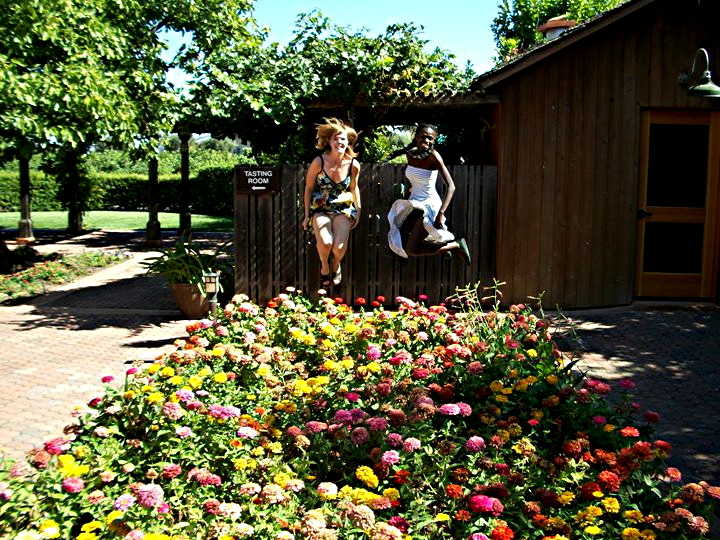
Bed of zinnias in August at Turnbull Wine Cellars
Ok, you might not get this excited about a bed of zinnias. But the range of colors and abundance of bloom makes them ideal for eye-catching annual borders. Resistance to spider mites and caterpillars make zinnias a suitable replacement for marigolds and petunias in the summer border. While you are at Turnbull, check out the amazing collection of vintage photographs!
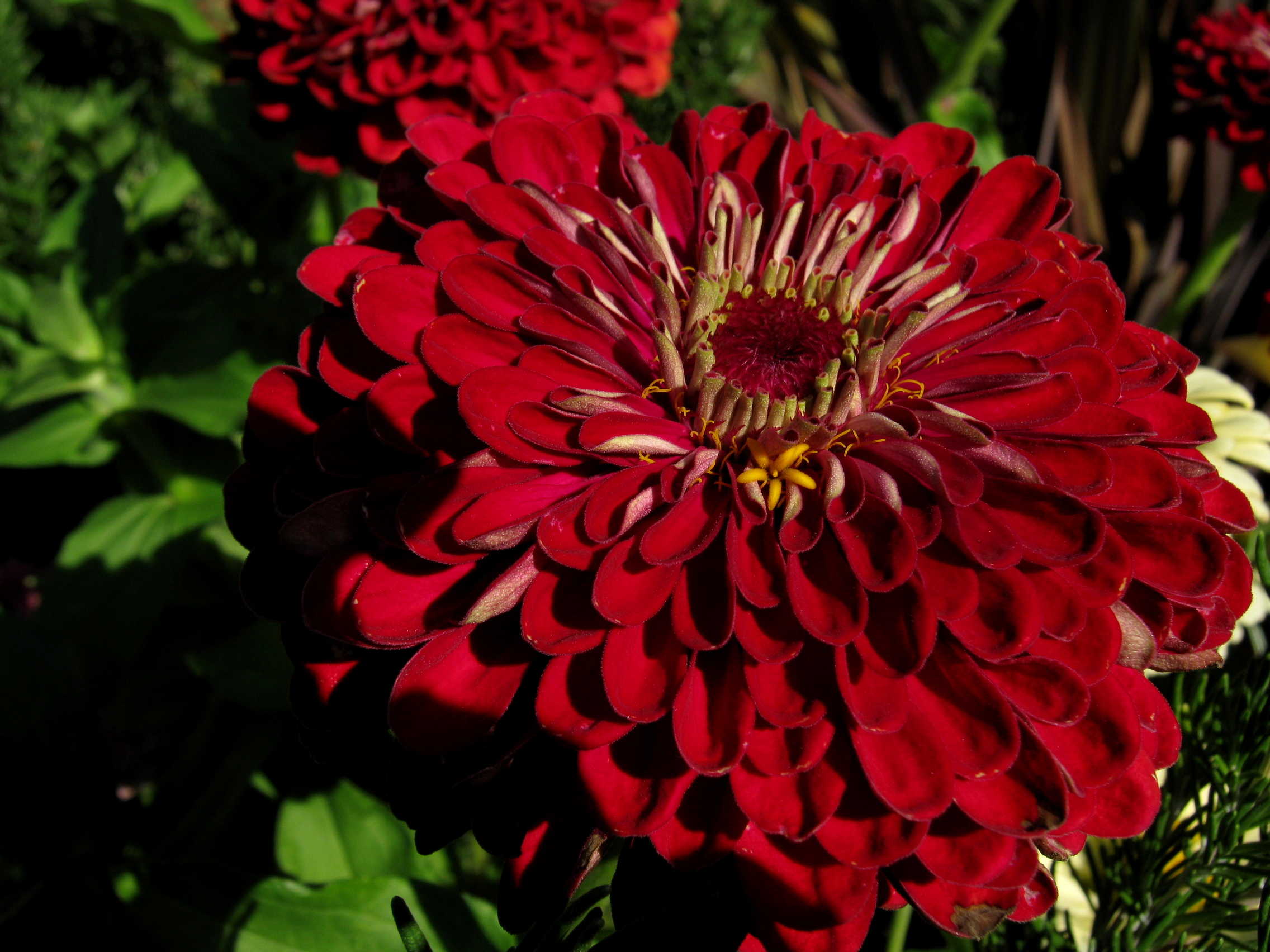
Zinnia flower at Mumm Napa, champagne vintners, Rutherford. (Click on any image for a larger version).
The recent popularity of succulents and ornamental grasses has led to a very different look in formerly formal garden beds. The grasses can look a little rangy without some grooming. Succulents such as Echeveria (Hen-and-chicks) and Sedum (Stonecrop) provide colorful foliage with compact, tidy growth habits. With the drought tolerance of both groups of plants, this is a positive trend.
One of the more interesting planting ideas I saw was at the upscale delicatessen in St. Helena, Dean & Deluca. Around the blazing hot walls they had placed two-foot long, one-foot wide aluminum irrigation troughs such as you would find at feed stores. These were planted with clipped boxwood hedges and assorted succulents. The mix of formal and southwestern plants in a rural "planter" was eye-catching, and the plants were thriving in the brilliant sun with apparently little care. Irrigation troughs provide considerable soil volume to retain moisture. You can find these at Higby's Country Feed store outside of Dixon on Currey Road.
Napa Valley has changed over the three-plus decades that I've been visiting. Disappearing are the Redleaf plums and roses that used to be planted along the edges of vineyards. Now you see olive trees in every niche along the roadsides. Aesthetically pleasing as this is (northern Italians must feel right at home), I can only imagine what it is like during allergy season: both grapes and olives are wind-pollinated.
A lot of the wineries seem more focused on their tasting rooms than on their wine. One that we stopped at, briefly as it turned out, seemed more concerned with the faux-Italian marble exterior and flooring, the fancy fountains, and the ornate formal driveway. My young visitors didn't even bother with the wine tasting there ("what is this, Disney does wine country?!?"). I was perplexed by the butchery of the old olives in the parking lot. Venerable trees had been stubbed off. Bah.
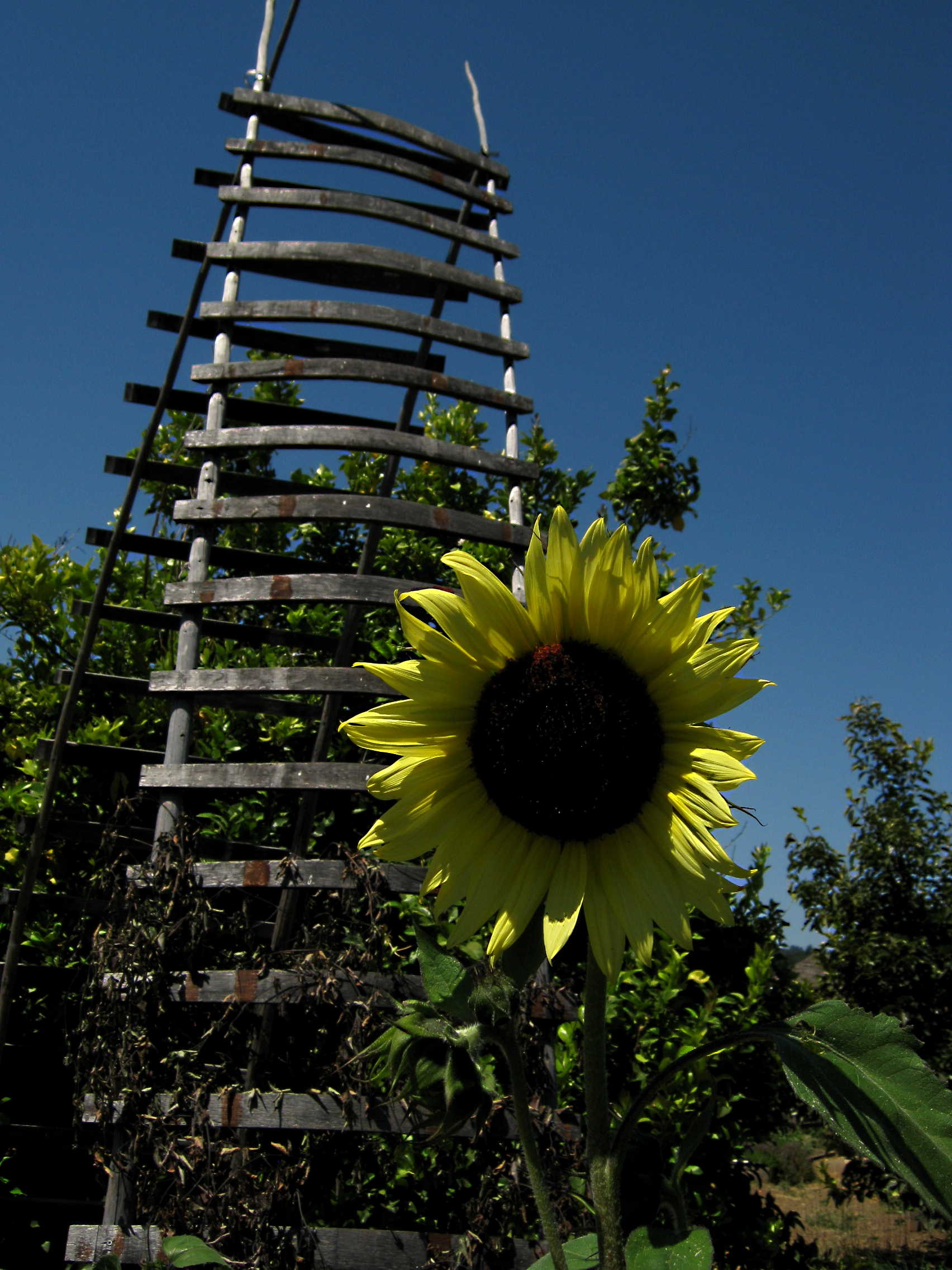
Sunflowers up the hill at Benziger
But another big change that is occurring gradually in the Napa Valley is the transition to safer, environmentally-sensitive ways of growing grapes. For many years grapes have been a heavily sprayed crop, treated with pesticides and grown in clean rows of bare dirt. The costs, tangible and otherwise, of these old techniques are becoming apparent to a new generation of viticulturists and vintners.
So we were delighted when we got off the main road a bit and found the Benziger Family Winery. The grapes are grown organically. The soils and vines are managed sustainably. The vineyard has certifications for sustainable practices and organic production. The vineyards are Demeter-certified biodynamic. "Instead of bagged fertilizer, weed killer and pesticides we rely on composting, natural predator-prey relationships, cover crops, and the animals that live on our estate, to keep our vineyard healthy and balanced."
There are lovely gardens around the tasting room, of course. Sheep and goats graze through the vines (carefully). Horses draw plows. Owl and bat boxes abound, up on high poles. A large, rather scummy pond attracts birds and dragonflies. And most important from a gardener's standpoint, they have two display gardens devoted to attracting and retaining beneficial insects, including pollinators and pest-eaters.
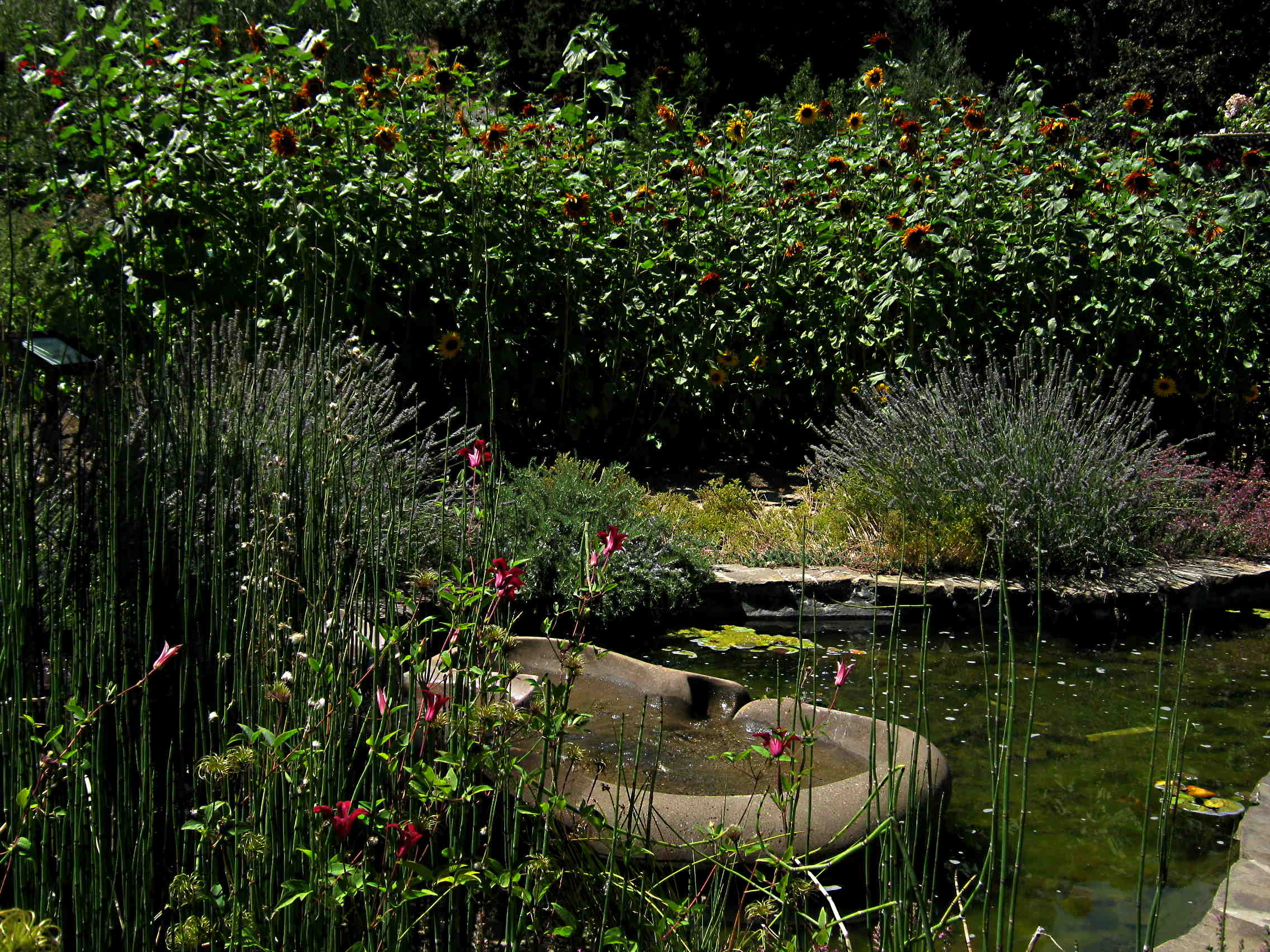
Garden at Benziger Family Winery
This tranquil sitting area was buzzing with activity! I counted five different types of bees on nearby flowers. Syrphid flies and tiny beneficial wasps abounded. Dragonflies circled the water and perched on the horsetails. The key is the mix of water, shade, and sun, with a diversity of plants chosen to provide habitat, resting sites, and food for beneficial insects and birds.
So as the young ladies enjoyed the cool comfort of the tasting room, I wandered the grounds. Since the temperature at that moment was 104F, I had the place pretty much to myself. When Noel Coward said "Mad dogs and Englishmen go out in the midday sun," he might have added gardeners who spot distant flowers.
The purpose of the gardens was to provide for birds, bees, and beneficial insects. When you do that, you want to provide:
o cover for birds and lizards
o moving water to draw dragonflies, and upright-growing plants for them to perch on.
o still water with basking rocks for smaller insects to drink
o tubular blossoms for hummingbirds and butterflies
o tiny flowers in clusters for small beneficial insects to feed on pollen and nectar
o cool shade for toads and people
o tall trees or poles for birds, as well as the aforementioned bat and owl boxes.
The closest display garden featured a small pond with a recirculating fountain whose water splashed down a course of shallow bowls. Nearby horsetail (Equisetum) provided natural perching points for dragonflies, which are voracious entomophagous beneficials: they eat whiteflies. A large bed of ornamental sunflowers provided dramatic color and was very active with bees and syrphid flies (aka hoverflies; their larvae eat aphids). The combination that gained the most attention was toward the back of the bed: dark purple asters next to bright goldenrod (Solidago). Each goldenrod plant was swarming with hundreds of bees of varying species, hoverflies, and tiny parasitoid wasps that were feeding on the pollen or nectar.
Other plants in the garden include lavender, mallow, Russian sage, and tansy. Except for the annual sunflowers, all of the plants I've mentioned are perennials, easy to grow, and drought tolerant. None require special soil or attention. This is a garden where you mix plants with differing foliage textures and bloom seasons, groom them occasionally, and sometimes pop in a new one when something gets overgrown or untidy. All could get by with as little as a deep soaking once a month.
There are lots of other plants that attract beneficial insects. Many California natives, herbs, and flowering annuals make the list.
Here are just a few that you can plant now to make your garden friendlier.
Perennials and annuals:
Borage (Borago officinalis),
Daisies of all types,
Sweet alyssum (Lobularia maritima),
True alyssum (Alyssum saxatile),
Yarrow (Achillea species).
Shrubs: California lilac (Ceanothus), Buckwheat (Eriogonum).
Herbs: fennel, cilantro, mint, mustard, rosemary.
Cover crops (plant from seed to build soil in your vegetable garden): soybeans (plant in summer), clover and vetch (plant in winter).
For more information about Benziger Family Winery grape-growing and wines, visit their web site at http://www.benziger.com/.
Some plants for beneficials |
| click to enlarge |
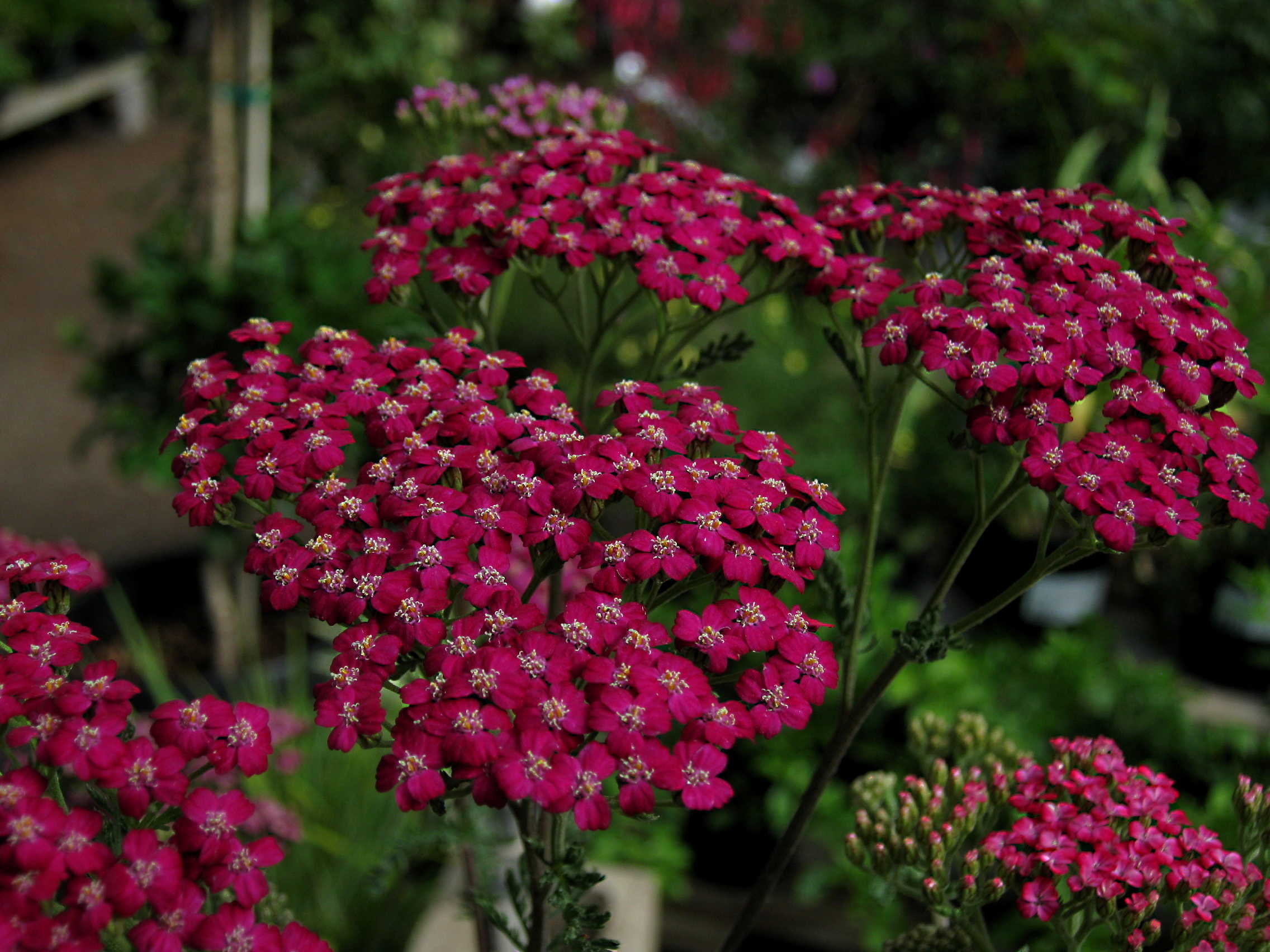 Achillea Red Beauty -- Yarrow |
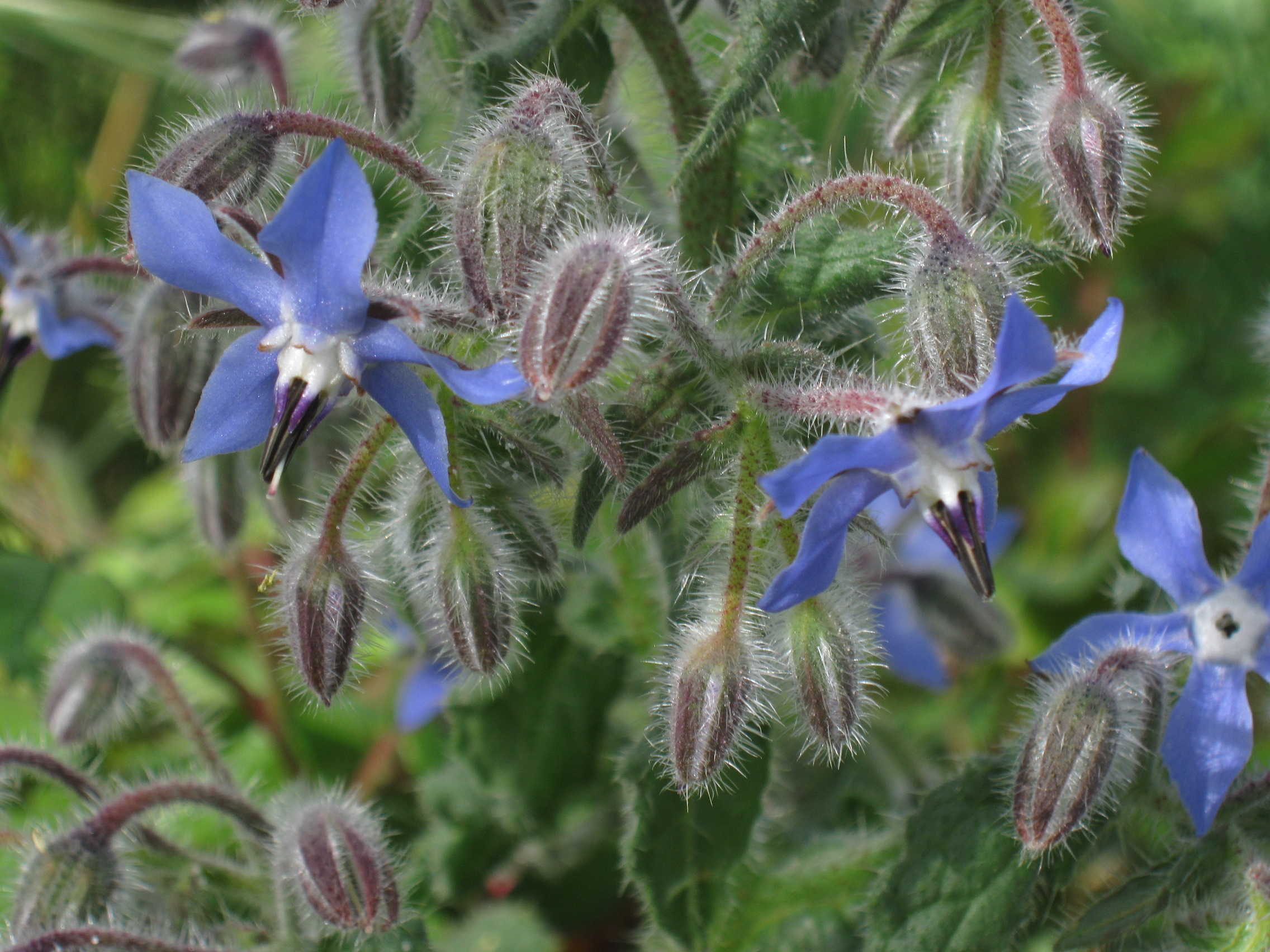 Borago officinalis -- Borage |
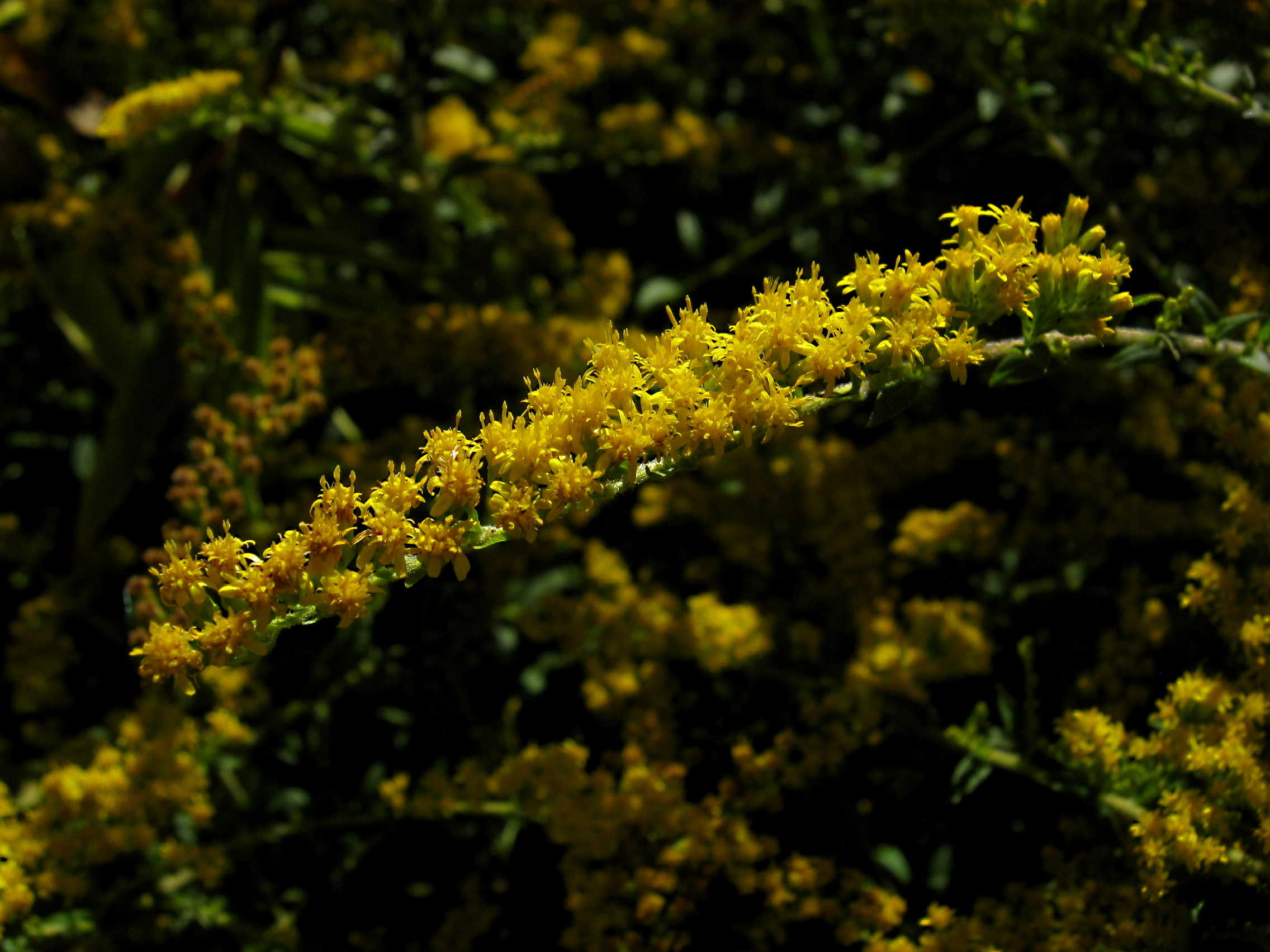 Solidago -- Goldenrod, closeup of flowers |
Written for the Davis Enterprise, September 23, 2010
© 2010 Don Shor, Redwood Barn Nursery, Inc., 1607 Fifth Street, Davis, Ca 95616
www.redwoodbarn.com
Feel free to copy and distribute this article with attribution to this author.
Click here for Don's other Davis Enterprise articles



No comments:
Post a Comment